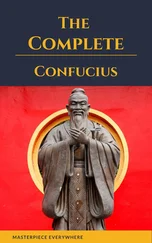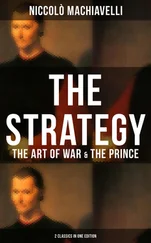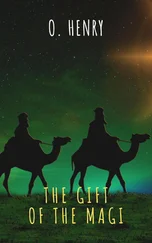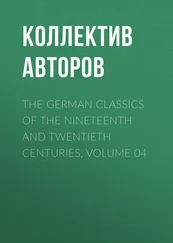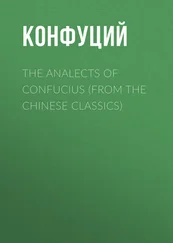1.The name Thwan, and the meaning of the character so-called, are sufficiently established. The Thwan are king Wăn's explanations of the entire hexagrams. It seems impossible now to p. 214 ascertain how the character arose, and how it was named Thwan. The treatise on the Thwan is ascribed to Confucius; and I have considered in the Introduction, p. 30, whether the tradition to this effect may to any extent be admitted.
2.The hexagram Kh ien is made up of six undivided lines, or of the trigram Kh ien, Fû-hsî's symbol for heaven, repeated. The Thwan does not dwell upon this, but starts, in its exposition, from the word 'heaven,' supposing that the hexagram represented all the meaning which had ever been intended by that term. In paragraphs 1, 2, 4 the four attributes in Wăn's Text (2 being occupied with the second, though it is not expressly named) are illustrated by the phenomena taking place in the physical world.
In paragraphs 3 and 5, the subject is the sage. He is not named indeed; and Khung Ying-tâ (A. D. 574-648) does not introduce him till paragraph 5, when the meaning necessitates the presence of a human agent, who rules in the world of men as heaven does in that of nature. The 'connexion between the end and the beginning,' which he sees, is that of cause and effect in the operations of nature and the course of human affairs. The various steps in that course are symbolised by the lines of the hexagram; and the ideal sage, conducting his ideal government, taking his measures accordingly, is represented as driving through the sky in a carriage drawn by six dragons. K û Hsî extravagantly says that 'the sage is Heaven, and Heaven is the sage;' but there is nothing like this in the text.
3.As the writer in expounding the Thwan of hexagram 1 starts from the word 'heaven,' so here he does so from the symbolic meaning attached to 'earth.' What I have said on the Text about the difference with which the same attributes are ascribed to Kh ien and Khwăn, appears clearly in paragraph 1. It is the difference expressed by the words that I have supplied,--'power' and 'capacity.' Kh ien originates; Khwăn produces, or gives birth to what has been originated.
The 'penetrating,' or developing ability of Khwăn, as displayed in the processes of growth, is the subject of paragraph 2. 'The brightness' refers to the beauty that shines forth in the vegetable and animal worlds.
Paragraph 3 treats of the symbol of the 'mare,' to lead the mind to the course of 'the superior man,' the good and faithful minister and servant.
See the note, corresponding to paragraph 4, on the Text. 'Resting in firmness' is the normal course of Khwăn. Where it is pursued, the good effect will be great, great as the unlimited capacity of the earth.
4. K un is made up of the trigrams K ăn and Khan; but according to the views on king Wăn's arrangement of the trigrams, as set forth especially in Appendix V, chap. 14, the six others come from Kh ien and Khwăn, and are said to be their children. On the first application of Khwăn to Kh ien, there results K ăn, the first line of Kh ien taking the place of the last of Khwăn; and on the second application, there results Khan, the middle line of Kh ien taking the place of that of Khwăn. McClatchie renders here:--'The Thun ( K un) diagram represents the hard and the soft (air) beginning to have sexual intercourse, and bringing forth with suffering!' But there is nothing in the Yî, from the beginning to the end, to justify such an interpretation. Nor do I see how, from any account of the genesis by the component trigrams, the idea of the result as signifying a state of difficulty and distress can be readily made out.
In paragraph 2 there is an attempt from the virtues or attributes assigned to the trigrams to make out the result indicated in the Thwan. To move and excite is the quality of K ăn; perilousness is the quality of Khan. The power to move is likely to produce great effects; to do this in perilous and difficult circumstances requires firmness and correctness. But neither is this explanation very satisfactory.
The first part of paragraph 3 depicts a condition of trouble and disorder in the natural world occasioned by the phenomena that are symbols of the significance of K ăn and Khan; but this is symbolical again of the disorder and distress, political and social, characteristic of the time. Good princes throughout the nation would help to remedy that; but the supreme authority should not resign itself to indifference, trusting to them.
5.The trigram Kăn has for its symbol in the natural world a mountain, which stands up frowningly, and stops or arrests the progress of the traveller. Stoppage, understood sometimes actively, and sometimes passive]y, is called the virtue or attribute indicated by it. Khan, as I said on p. 32, has water for its symbol, and especially in the form of rain. Here, however, the water appears as a stream in a difficult defile, such as ordinarily appears on an approach to a mountain, and suggesting perilousness as the attribute of such a position. From the combination of these symbols and their attributes the writer thinks that he gets the idea of the character (not the entire hexagram) Măng, as symbolical of ignorance and inexperience. See on 'the Great Symbolism' below.
Down to the last sentence of paragraph 2, all that is said is intended to show how it is that the figure indicates progress and success. The whole representation is grounded on the undivided line's being in the central place. It is the symbol of active effort for the teaching of the ignorant in the proper place and time; this being responded to by the divided fifth line, representing the ignorance to be taught as docile, 'will responds to will.' But the p. 218 subject of line 2 requires sincerity in the applicant for instruction, and feels that he must make his own teaching acceptable, and agreeable. All this serves to bring out the idea of progress and success.
Then finally in the young and ignorant there is 'a correct nature,' a moral state made for goodness. The efficient teacher directing his efforts to bring out and nourish that, the progress and success will be 'great;' the service done will be worthy of 'a sage.'
6.Hsü is composed of Kh ien, having the quality of strength, and of Khan, having the quality of perilousness. Thc strong one might readily dare the peril, but he restrains himself and waits. This is the lesson of the hexagram,--the benefit of action well considered, of plans well matured.
The fifth line, as we have observed more than once already, is the place of honour, that due to the ruler or king. It is here called 'the Heavenly or Heaven-given seat, 'the meaning of which expression is clear from its occurrence in the Shih, III, i, ode 2. 1. Five is an odd number, and the fifth is therefore the 'correct' place for an undivided line; it is also the central place of the trigram, indicating. how its occupant is sure to walk in the due mean. See further the notes on the Text, p. 68.
7.Paragraph 1 here is much to the same effect as the first sentence in the notes on the Thwan of the Text. It is said, 'Strength without peril would not produce contention; peril without strength would not be able to contend.'
2. 'A strong line has come and got the central place:'--this sentence has given rise to a doctrine about the changes of trigrams and hexagrams, which has obscured more than anything else the interpretation of the Yî. Where has the strong second line come from? From a hundred critics we receive the answer,--'From Tun (  ).' The reader will see that if the second and third lines of the lower trigram there be made to change places, there results
).' The reader will see that if the second and third lines of the lower trigram there be made to change places, there results  or Sung. The doctrine of changing the figures by the manipulation of the stalks did spring up between the time of Wăn and his son and that of the composition of the Appendixes; but there is no trace of it in the real Text of the Yî; and it renders any scheme for the interpretation of the figures impossible. The p. 220 editors of the imperial Yî allow this, and on the present passage discard the doctrine entirely, referring to the language of the Thwan on hexagrams 11 and 12 as fatal to it. See the notes there, and the Introduction, pp. 11-16. 'A strong line has come' is to be taken as equivalent simply to a strong line is there.'
or Sung. The doctrine of changing the figures by the manipulation of the stalks did spring up between the time of Wăn and his son and that of the composition of the Appendixes; but there is no trace of it in the real Text of the Yî; and it renders any scheme for the interpretation of the figures impossible. The p. 220 editors of the imperial Yî allow this, and on the present passage discard the doctrine entirely, referring to the language of the Thwan on hexagrams 11 and 12 as fatal to it. See the notes there, and the Introduction, pp. 11-16. 'A strong line has come' is to be taken as equivalent simply to a strong line is there.'
Читать дальше
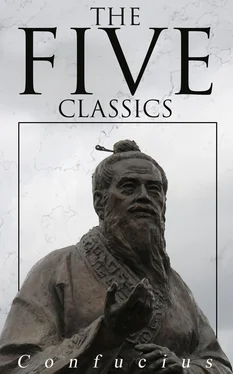
 ).' The reader will see that if the second and third lines of the lower trigram there be made to change places, there results
).' The reader will see that if the second and third lines of the lower trigram there be made to change places, there results  or Sung. The doctrine of changing the figures by the manipulation of the stalks did spring up between the time of Wăn and his son and that of the composition of the Appendixes; but there is no trace of it in the real Text of the Yî; and it renders any scheme for the interpretation of the figures impossible. The p. 220 editors of the imperial Yî allow this, and on the present passage discard the doctrine entirely, referring to the language of the Thwan on hexagrams 11 and 12 as fatal to it. See the notes there, and the Introduction, pp. 11-16. 'A strong line has come' is to be taken as equivalent simply to a strong line is there.'
or Sung. The doctrine of changing the figures by the manipulation of the stalks did spring up between the time of Wăn and his son and that of the composition of the Appendixes; but there is no trace of it in the real Text of the Yî; and it renders any scheme for the interpretation of the figures impossible. The p. 220 editors of the imperial Yî allow this, and on the present passage discard the doctrine entirely, referring to the language of the Thwan on hexagrams 11 and 12 as fatal to it. See the notes there, and the Introduction, pp. 11-16. 'A strong line has come' is to be taken as equivalent simply to a strong line is there.'